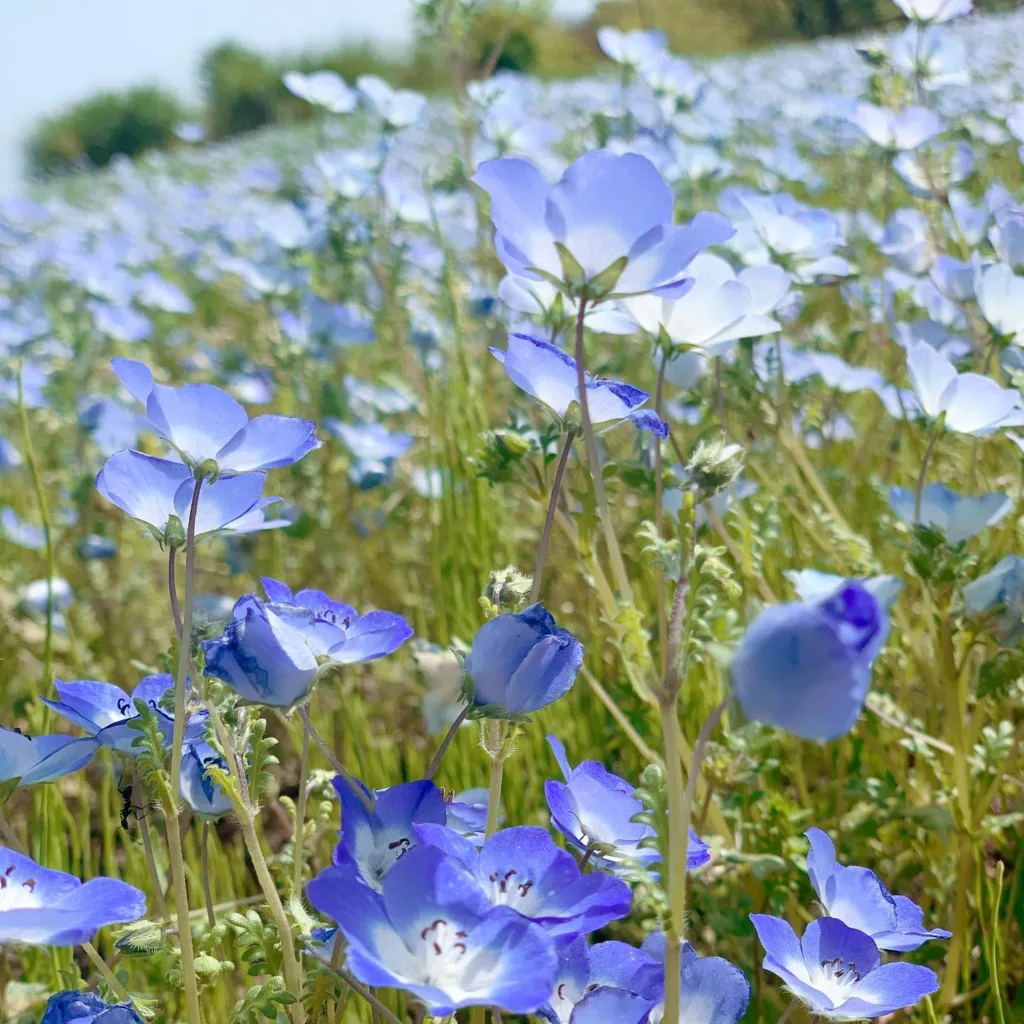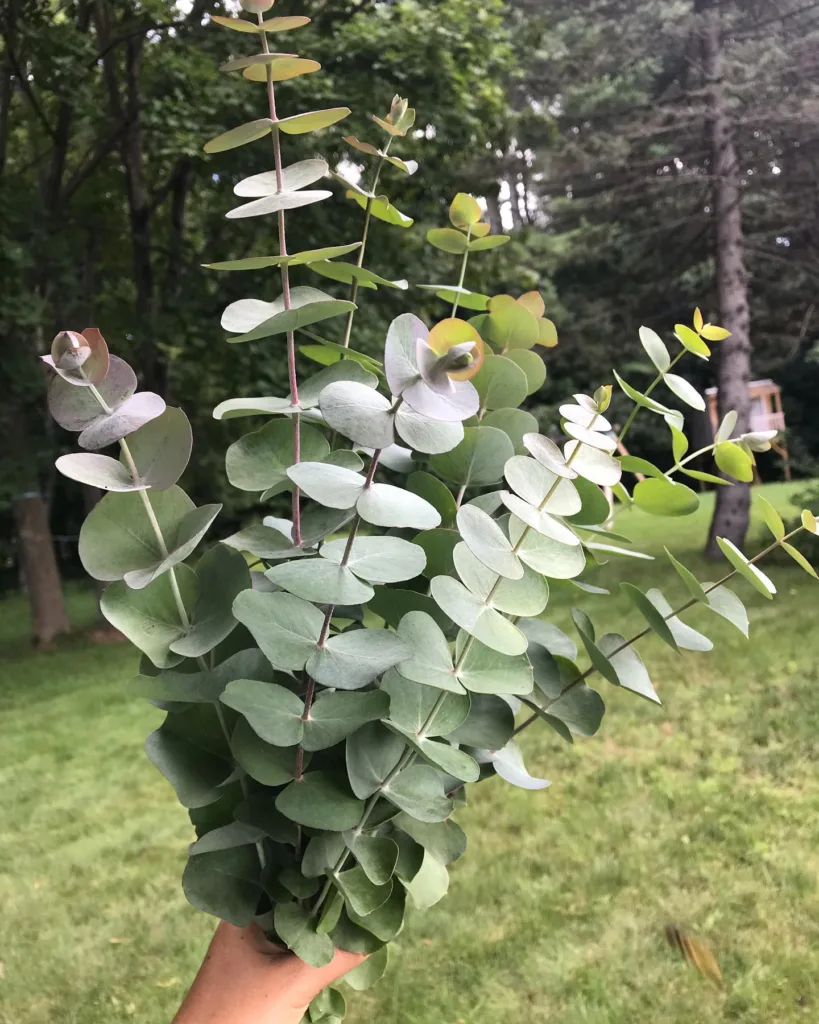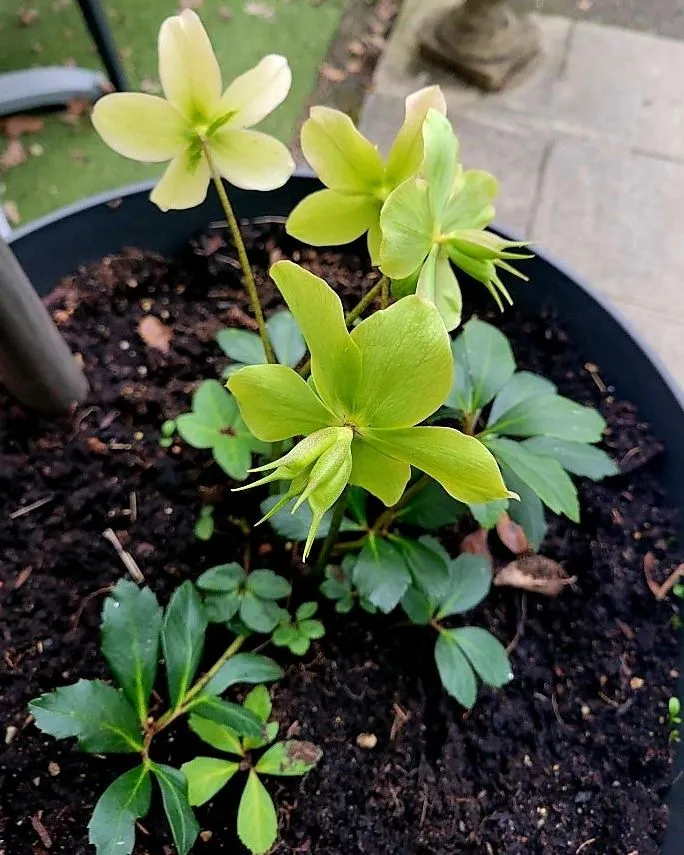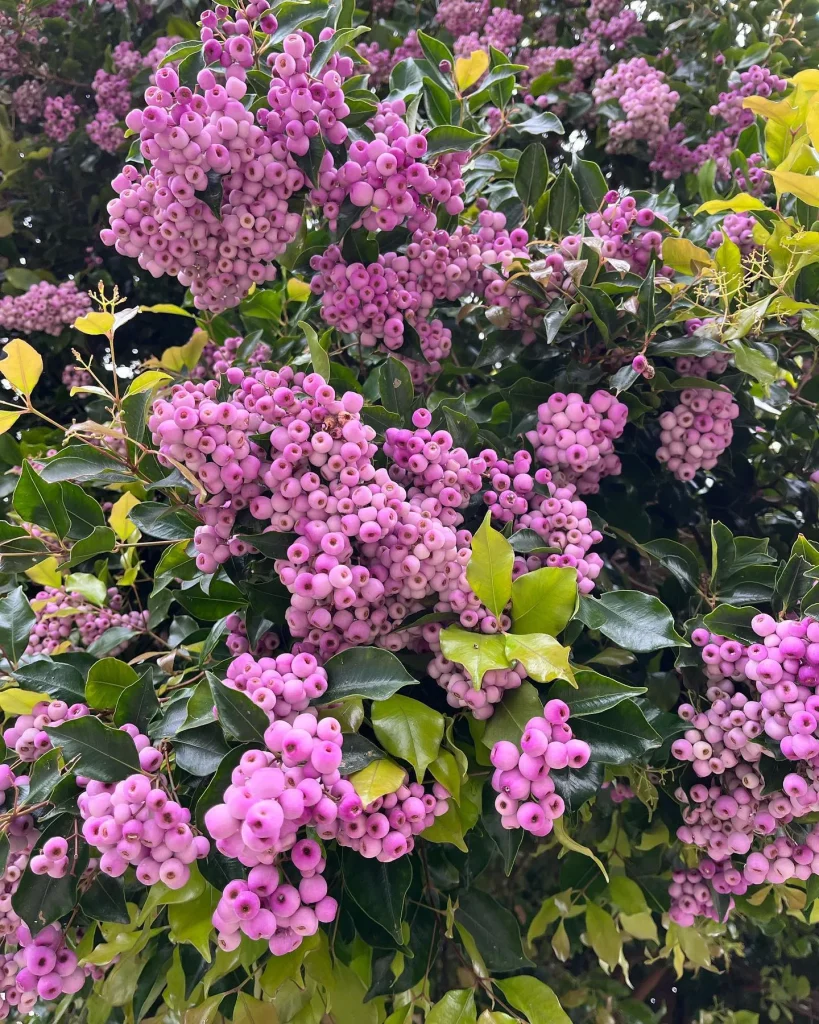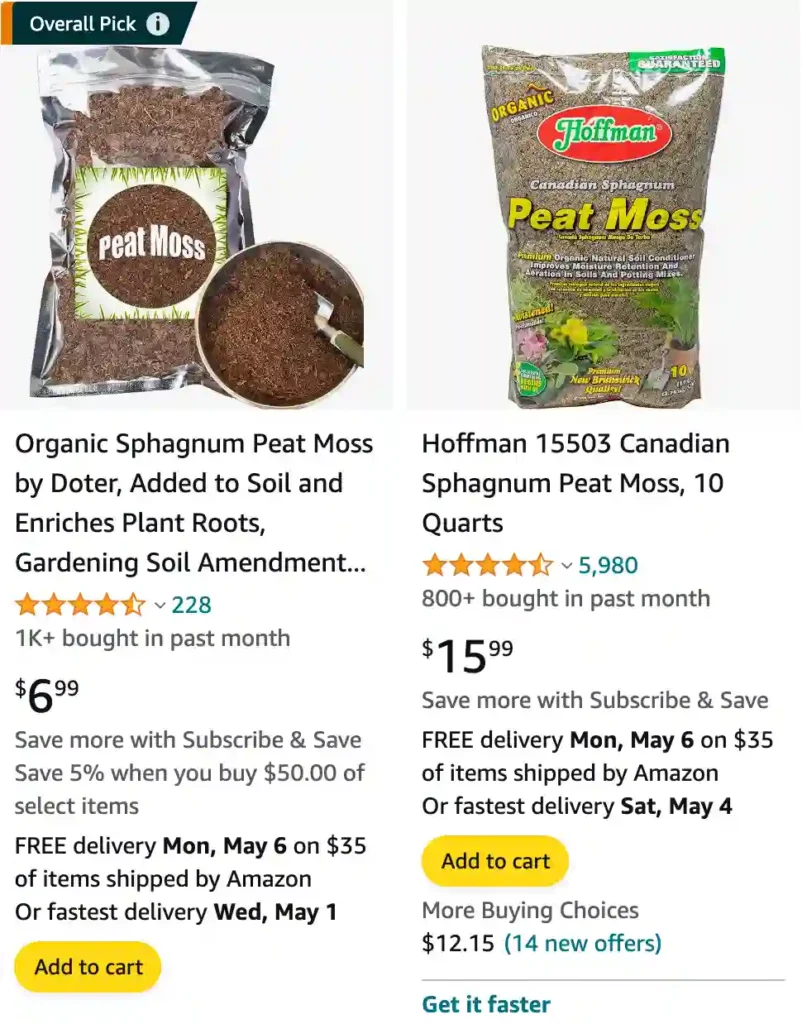
Is peat moss good for grass?
I tried using peat moss a few years back when I was seeding a patchy area of my lawn. It did help hold in moisture at first, which was great during that hot, dry summer. But honestly, it ended up being a bit of a pain. It’s really light and dusty, so applying it evenly was a chore, and it kinda blew around in the wind. The grass did come in eventually, but I’m not sure the peat moss was a miracle cure. I think next time I’ll just stick to compost for a more natural soil amendment.
What vegetables do not like peat moss?
I’ve learned my lesson about peat moss in the veggie garden. Those long rows of carrots I planted last year? Total flop. The peat moss just held onto too much water, and the carrots ended up all stubby and misshapen. It seems like anything that likes well-drained soil, like carrots, radishes, onions, and even beans, struggles in straight peat moss. I’m thinking about raised beds this year, with a good mix of compost and topsoil for those types of veggies.
How much peat moss do i need?
That depends on what you’re using it for! For amending potted plants, a little goes a long way. Just a handful mixed in with your regular potting soil can be plenty. When it comes to the lawn, though, it depends on the size of the area and what you’re doing. For small patches, a bag or two might be enough, but for bigger areas you might need several bags to get good coverage. If you’re just overseeding, a thin layer (like a quarter inch) is all you really need. More than that can smother the new grass. My advice? Measure the area you’re working with and then check the coverage information on the bag of peat moss you’re planning to buy. That should give you a good starting point.
How to make peat moss?
Unfortunately, you can’t really make true peat moss yourself. It takes thousands of years for sphagnum moss and other organic matter to decompose under specific wetland conditions to form peat moss.
However, there is a good alternative! Leaf mold is basically composted leaves, and it shares many of the same properties as peat moss. It holds moisture well, improves drainage in heavy soil, and adds organic matter. Making leaf mold is pretty easy. All you need is a pile of leaves in a shady corner of your yard. Turn it occasionally to aerate it, and in a year or two, you’ll have a nice batch of homemade “peat-free” peat moss!
How to spread peat moss?
Spreading peat moss can be a dusty affair, but I’ve gotten a bit of a system down now. First things first, I loosen up the peat moss in the bag. It tends to be compacted, so I whack the bag with a shovel or rake to break it up a bit. Then, I use a shovel to move it into a wheelbarrow. This helps contain the dust and makes it easier to manage.
For spreading, I’ve found a wide rake or a leaf blower (on the lowest setting) works best. The rake lets you control the placement and break up clumps, while the blower is good for covering larger areas quickly. The key is to spread a thin layer, no more than a quarter inch. Too much peat moss can smother grass or seedlings. I also try to work on calm days to avoid the wind whipping the peat moss all over the place!
How much peat moss to cover grass seed?
When it comes to using peat moss over grass seed, I actually recommend going light-handed. You really only need a thin veil, like a quarter inch (about 6 millimeters) at most, to get the job done.
Here’s why: too much peat moss can backfire. While it helps retain moisture, which is great for germination, a thick layer can actually block sunlight and smother the new grass seedlings. It can also turn into a crust that makes it hard for the little sprouts to break through.
So, my approach is to spread the peat moss evenly with a rake or a broadcast spreader on the lowest setting. A light dusting is all you need to keep the seeds moist without hindering their growth. Remember, the goal is to create a protective layer, not a thick blanket.
Is peat moss good for tomatoes?
Peat moss can be a bit of a double-edged sword for tomatoes in my experience. On the one hand, it’s fantastic for holding moisture, which tomatoes love, especially during hot spells. I’ve also seen some gardeners recommend it to adjust soil pH for tomatoes, since they prefer slightly acidic soil.
However, peat moss by itself isn’t very nutritious, and tomatoes are hungry feeders. They need a good amount of nutrients to produce those juicy fruits. So, if you just plant them straight in peat moss, they might not thrive.
For me, the best use for peat moss with tomatoes is amending my existing soil. I mix a bag or two of peat moss with some compost and my native soil in the planting hole. This gives the tomatoes a good balance of moisture retention, drainage, and nutrients. They seem to appreciate the happy medium!
Where to buy peat moss in bulk?
You can buy peat moss in bulk from a few different places:
- Landscaping supply stores:These stores typically sell peat moss by the yard or in large bags. They may also offer delivery services.
- Home improvement stores:Many home improvement stores sell peat moss in bulk, although their selection may not be as wide as landscaping supply stores.
- Online retailers:There are a number of online retailers that sell peat moss in bulk. This can be a convenient option, but you’ll need to factor in the cost of shipping. Be sure to check the reviews of the retailer before you make a purchase.
When buying peat moss in bulk, it’s important to consider the following factors:
- The quality of the peat moss: There are different grades of peat moss available. For gardening purposes, you’ll want a good quality product that is free of debris and weeds.
- The price: Peat moss can vary in price depending on the quality, the quantity you purchase, and the retailer.
- The delivery costs: If you’re buying peat moss online, be sure to factor in the cost of delivery.
What is the pH of peat moss?
Peat moss can actually vary in pH depending on the source and type. Here’s what I’ve learned:
- Generally acidic: Most peat moss falls on the acidic side of the pH scale, somewhere in the range of 3.0 to 5.5. This is why it’s often recommended for plants that prefer acidic soil, like blueberries and azaleas.
- Sphagnum peat moss: This specific type, often called sphagnum peat moss, tends to be the most acidic, ranging from 3.0 to 4.5. It’s formed from sphagnum moss, which decomposes in bogs and wetlands.
- Not all created equal: However, some commercially available peat moss might be neutral or slightly acidic, around 6.5. This is because it may come from different sources or be a blend with other materials.
My tip: When buying peat moss, check the label or ask the supplier about the pH level. This will help you determine if it’s suitable for your specific needs.
Can peat moss be used as mulch?
I wouldn’t recommend using peat moss as the main type of mulch for most plants. While it has some potential benefits, there are drawbacks that make it a less than ideal choice.
Here’s why I’m not a big fan of peat moss as mulch:
- Lightweight and blows away: Peat moss is super light and can easily get scattered by wind or rain. This means you might need to constantly reapply it, which can be a hassle.
- Not great for weed suppression: An ideal mulch should help smother weeds, but peat moss isn’t very effective at this. Weeds can easily sprout through the loose material.
- Doesn’t add nutrients: Unlike organic mulches like compost or shredded bark, peat moss doesn’t decompose and add nutrients to the soil over time.
However, there are some situations where peat moss might be a suitable addition to a mulch mix:
- Moisture retention: If you have plants that need consistently moist soil, like blueberries, a small amount of peat moss mixed with another mulch material could help retain moisture.
- Acid-loving plants: Since peat moss is acidic, it can be beneficial for acid-loving plants like azaleas or rhododendrons, when used sparingly in a mulch mix.
Overall, for most situations, I find other mulch options like shredded bark, wood chips, or compost to be more practical and beneficial for my garden.
Is peat moss good for succulents?
No, peat moss isn’t the best choice for succulents in my experience. Here’s why:
- Drainage issues: Succulents thrive in well-draining soil, and peat moss tends to retain a lot of moisture. This can lead to root rot, which is a big enemy of these desert plants.
- Slow drying: Even after watering, peat moss can take a long time to dry out completely. Succulents don’t like to sit in wet soil for extended periods.
- Not very airy: Peat moss can be quite dense, which can restrict air circulation around the roots. Succulents prefer their roots to breathe.
While peat moss can be a helpful soil amendment for some plants, it’s just not a good fit for the specific needs of succulents. They do much better with a potting mix that’s light, airy, and drains quickly. I usually use a mix of cactus mix, perlite, and some potting soil for my succulents, and they seem happy with that.
Why is peat moss so expensive?
There are a couple reasons why peat moss can be more expensive than other potting amendments:
- Slow to regenerate: Peat moss is formed over thousands of years from decomposed sphagnum moss in bogs. It’s a finite resource that takes a very long time to replenish naturally. This limited supply can drive the price up.
- Transportation costs: A lot of the peat moss sold in places like the US comes from Canada. The cost of shipping it across the border adds to the overall price you see at the store.
Luckily, there are some alternatives to peat moss that are often more affordable and sustainable:
- Compost: This is a great all-around soil amendment that’s packed with nutrients. You can even make your own compost pile at home for free!
- Coconut coir: Made from the husks of coconuts, coir offers good drainage and moisture retention similar to peat moss. Plus, it’s a renewable resource.
- Leaf mold: Just like compost, you can create your own leaf mold by piling up leaves in your yard. It breaks down over time into a rich, dark material that improves soil quality.
So, while peat moss has its benefits, it’s definitely not the only option. By considering these more affordable and eco-friendly alternatives, you can save some money and help the environment at the same time.
Is peat moss good for clay soil?
Peat moss can be a bit of a double-edged sword for clay soil, and it really depends on what you’re hoping to achieve. Here’s my take on it:
Potential benefits:
- Improved drainage: Peat moss can help loosen up compacted clay soil, which can improve drainage. This is especially helpful if your clay soil tends to stay soggy after watering or rain.
Drawbacks to consider:
- Short-lived improvement: While peat moss can loosen things up initially, over time it can decompose and actually worsen drainage. The loose peat moss particles can create pockets within the clay, leading to even more uneven drainage.
- Water repellency: Dry peat moss can be hydrophobic, meaning it repels water at first. This can make it difficult for water to penetrate the soil initially, especially if not thoroughly wetted before incorporating.
- Nutrient imbalance: Peat moss itself isn’t a great source of nutrients for plants. While it can improve drainage in clay soil, it might leave your plants lacking in essential nutrients.
My take: If you have clay soil, there are better options for amending it. Compost, aged manure, or even shredded leaves are all great choices. These organic materials will help loosen the clay, improve drainage, and add nutrients to the soil over time.
Alternative solution: If you’re set on using peat moss, consider mixing it with compost or another organic material. This will help address the nutrient deficiency and provide a more balanced amendment for your clay soil. However, remember that this might be a temporary fix, and you’ll likely need to amend the soil again in the future.
Is peat moss good for strawberries?
Peat moss can be a good amendment for strawberries in some situations, but it’s not a perfect solution. Here’s what I’ve found:
Pros:
- Acidity: Strawberries prefer slightly acidic soil (around pH 5.5 to 6.5). Most peat moss is acidic, so it can help lower the pH of your soil if it’s too alkaline.
- Moisture retention: Peat moss holds onto moisture well, which can be beneficial in hot weather or for container-grown strawberries.
Cons:
- Drainage issues: While moisture retention is helpful, too much can be a bad thing. Peat moss can become waterlogged, which can lead to root rot in strawberries.
- Nutrient deficiency: Peat moss itself isn’t a great source of nutrients for plants. Strawberries are feeders, so they need a rich soil to thrive.
- Not ideal for long-term: Over time, peat moss can decompose and compact, reducing drainage and air circulation.
My recommendation:
If you’re thinking about using peat moss for strawberries, it’s best to use it as an amendment, not the main planting medium. Here’s what I would do:
- Mix it up: Combine peat moss with compost, aged manure, or another organic material that’s rich in nutrients. This will give your strawberries the acidity they like, improve drainage, and provide them with the nutrients they need to produce delicious fruit.
- Focus on raised beds: Raised beds with good drainage are ideal for strawberries. You can fill them with a mix of your amended soil and ensure proper drainage holes.
- Monitor moisture: Be mindful of watering, especially if you use a peat moss mix. Strawberries don’t like to sit in soggy soil.
Overall, peat moss can be a helpful tool for strawberry growers, but it’s best used strategically as part of a well-rounded soil mix.
Is peat moss good for roses?
Peat moss can be a beneficial amendment for roses in some ways, but it’s not a perfect solution on its own. Here’s a breakdown of its pros and cons for your rose garden:
Pros:
- Improved Drainage: Roses prefer well-draining soil to prevent root rot. Peat moss can help loosen up heavy clay soil and improve drainage, allowing for better air circulation around the roots.
- Moisture Retention: Especially during hot and dry periods, peat moss’s ability to hold moisture can be helpful for keeping your roses hydrated.
- Slightly Acidic: Most peat moss leans towards the acidic side of the pH scale, which can be beneficial for roses that prefer slightly acidic soil (around pH 6.0 to 6.5).
Cons:
- Drainage Issues (Double-Edged Sword): While initially helpful for drainage in heavy clay, over time peat moss can decompose and compact, reducing drainage and air circulation in the long run.
- Nutrient Deficiency: Peat moss itself isn’t a rich source of nutrients that roses need to thrive and produce beautiful blooms.
- Can be Water Repellent: Dry peat moss can be hydrophobic, repelling water at first. This can make it difficult to initially moisten the soil, especially if not thoroughly soaked before incorporating it.
My recommendation for using peat moss with roses:
- Mix it Wisely: Use peat moss as an amendment, ideally combining it with composted manure, garden soil, or another organic material rich in nutrients. A ratio of 1/3 peat moss to 2/3 of the other ingredients is a good starting point. This will provide the benefits of improved drainage and moisture retention while also offering the nutrients roses need.
- Focus on Drainage: Ensure your rose planting area has good drainage, regardless of whether you use peat moss. Raised beds with proper drainage holes are ideal for roses.
- Monitor Moisture: While peat moss helps retain moisture, be mindful of watering, especially in heavy clay soils or during cooler weather. Roses don’t like to sit in soggy soil.
Alternatives to Peat Moss:
- Compost: Packed with nutrients, compost is a great all-around soil amendment that can benefit your roses.
- Aged Manure: Another nutrient-rich option, aged manure provides essential nutrients for healthy rose growth.
- Coconut Coir: Similar to peat moss in terms of moisture retention and drainage, coconut coir is a renewable resource and offers a more eco-friendly alternative.
By using peat moss strategically in a well-rounded soil mix and focusing on good drainage practices, you can create a healthy environment for your roses to thrive and reward you with beautiful blooms.
If i die, water my plants!
